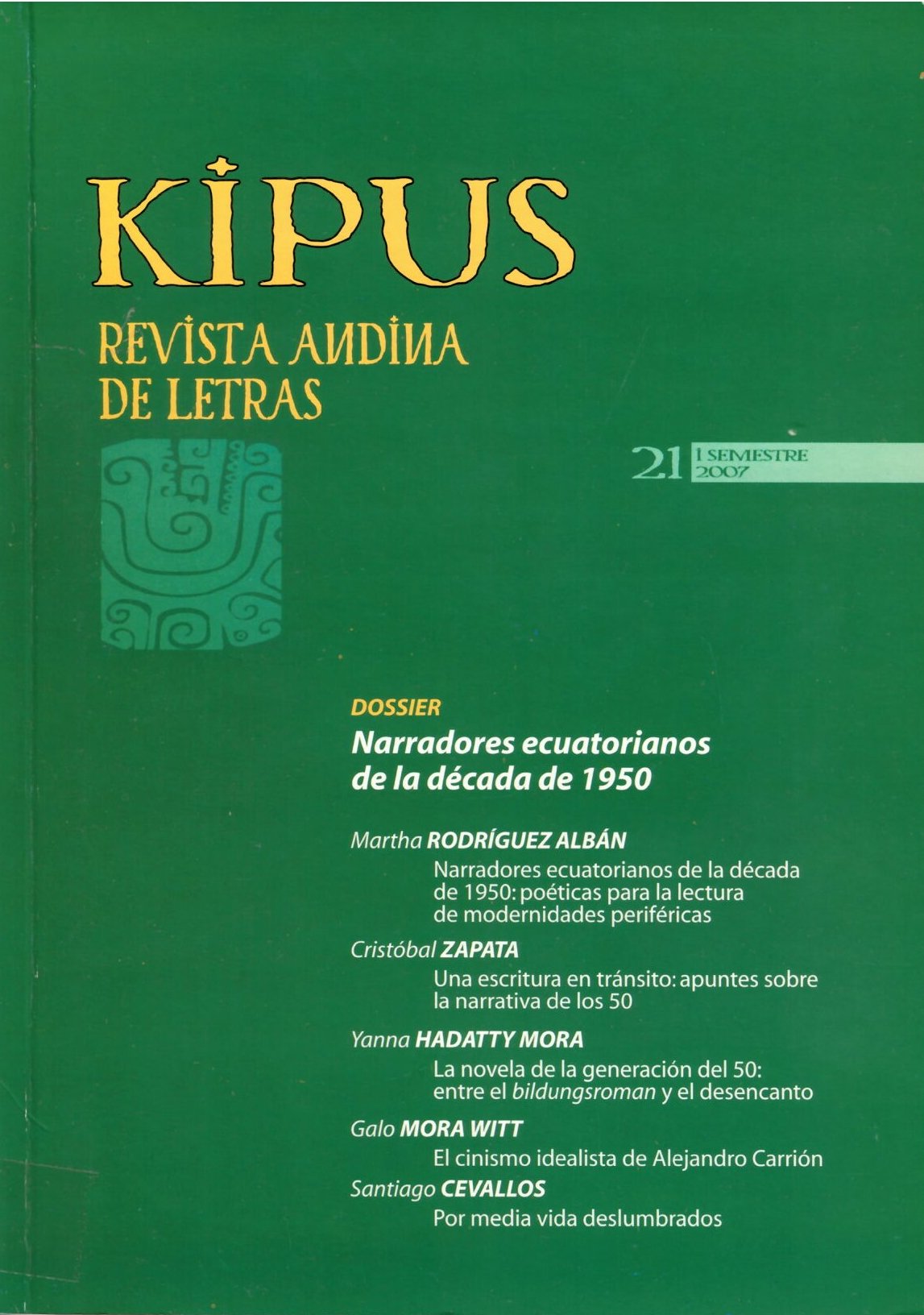Por media vida deslumbrados
Keywords:
Ecuadorian narrative, Jorge Icaza, Ecuadorian theater, Ecuadorian storiesAbstract
In this essay the idea is planted, perhaps with greater intensity that in Huasipungo (1934) and El Chulla Romero and Flores (1958), it is in three pieces of work studied by Jorge Icaza where it can be clearly appreciated –in such a manner that it dazzles– his esthetic proposal: in the theatrical piece Flagelo (1936), the novel Media vida deslumbrados (1942) and the story «El nuevo San Jorge» (1952). Without alienating itself from social denunciation, Icaza closes his dramatic proposal with Flagelo; which will constitute a sort of literary manifesto, by the esthetic repercussions which can be observed in the total narrative of the author. In Media vida deslumbrados an effective equilibrium between the author’s proposals and his zeal to demonstrate social denunciation can be appreciated. According to the author of this essay, «El nuevo San Jorge» would be the most radical masterpiece, in terms of esthetic proposal, in all of Icaza´s work; in the same piece of work the neo-Baroque elements are highlighted, with insistence in masked games, the intermittences between lights and shadows, and in the multiple, and at the same time, one dimensional face of the people who unlawfully hold power –some of these common elements of the two masterpieces mentioned, and El Chulla Romero
and Flores.
Downloads
References
Bustos, Guillermo, «Quito en la transición: actores colectivos e identidades culturales urbanas (1920-1950)», en Enfoques y estudios históricos, Quito a través de la Historia, Quito, Editorial Fraga, 1992.
Caro, Olga, «La obra teatral de Jorge Icaza», en Memorias de Jalla Tucmán 1995, vol. I, Tucumán, Universidad Nacional de Tucumán, 1997.
Corrales, Manuel, Jorge Icaza: frontera del relato indigenista, Quito, Centro de Publicaciones de la Pontificia Universidad Católica del Ecuador, 1974.
Cueva, Agustín, La literatura ecuatoriana, Buenos Aires, Centro Editor de América Latina S.A., 1968.
––– Lecturas y rupturas, Quito, Editorial Planeta del Ecuador, 1986.
––– Entre la ira y la esperanza, Quito, Editorial Planeta del Ecuador, 1987.
––– Literatura y conciencia en América Latina, Quito, Editorial Planeta del Ecuador, 1993.
Echeverría, Bolívar, Las ilusiones de la modernidad, México, UNAM / El Equilibrista, 1995.
––– La modernidad de lo barroco, México, Ediciones Era, 1998.
Icaza, Jorge, Media vida deslumbrados, Quito, Editorial Quito, 1942.
––– Huairapamushcas, Quito, Casa de la Cultura, 1948.
––– Atrapados, Buenos Aires, Losada, 1972.
––– En las calles, Quito, El Conejo, 1985.
––– Cholos, estudio introductorio y notas de Manuel Corrales Pascual, Quito, Libresa, 2005.
––– Huasipungo, estudio introductorio y notas de Manuel Corrales Pascual, Quito, Libresa, 2005.
––– El Chulla Romero y Flores, Estudio introductorio y notas de Manuel Corrales Pascual, Quito, Libresa, 2005.
––– Cuentos completos, Estudio introductorio y notas de Alicia Ortega Caicedo, Quito, Ministerio de Educación y Cultura / Universidad Andina Simón Bolívar, Sede Ecuador / Libresa, 2006.
––– Flagelo, en Teatro de Jorge Icaza, Quito, Libresa, 2006.
Sackett, Theodore, «Última metamorfosis del indigenismo: Atrapados», en Literatura icaciana, Quito-Guayaquil, Su Librería, s.f.
Downloads
Published
How to Cite
Issue
Section
License

This work is licensed under a Creative Commons Attribution-NonCommercial-ShareAlike 4.0 International License.







.png)
